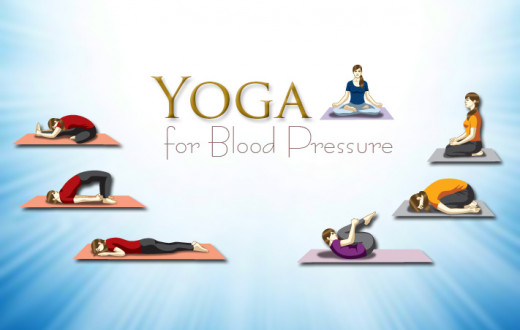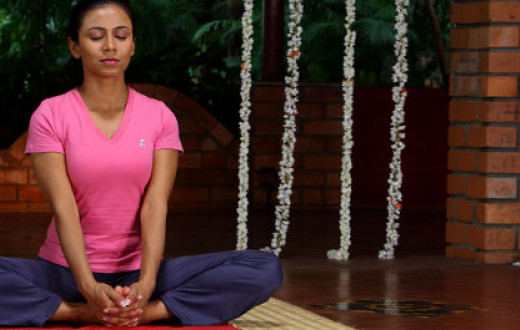The clang of heavy weights, the steady thump of shoes on a treadmill, the wall of mirrors, the anxious expressions, the instructor who means business and the loud rhythmic music- the standard gym can prove to be both, a motivating setup and an intimidating experience. Especially when compared with the tranquil and serene environment one usually finds at a yoga studio.
However, if your target is to not only shed the excess kilos and build a muscular body, but also achieve enduring inner radiance, it helps to know what these two different approaches to fitness have to offer, so you can reap benefits from the best of both worlds. The physical aspect of yoga has become more popular worldwide, and people do consider it as another means of physical fitness, but yoga as a way of life offers a holistic package for total personal transformation.
Yoga today is a global phenomenon that has assumed various new forms and styles, many of which focus as rigorously on achieving that coveted body frame as your local gym. However, the deviation dilutes the higher purpose behind the practice of yoga- to move from the outer appearance to inner peace. More than a workout, yoga is work within! In words of Yoga Guru, Sri Sri Ravi Shankar, “Yoga is not just exercise, it is how skillfully you communicate, how skillfully you act in any given situation.” “Yoga is skill in action”, says Krishna in Bhagavad Gita.
Yoga, which literally means the union of the body, mind and soul, is much more than a route to weight loss. Which is why, it is wise to look for a yoga class that follows a more genuine and holistic approach to healthy living. While an hour spent at the gym exerts pressure on the body, yoga helps ease the resulting stress and helps tackle emotions like anger and frustration which are often the cause of weight gain tendencies. Regular fitness programs focus on completing daily benchmark and goals, while at classical yoga class you observe what you are doing and how you are feeling while doing the yoga postures; you observe the physical sensations, breath, mental state and your being. You may feel depressed at gym if you don’t achieve your set target, but at yoga class you always come out smiling and feeling good and fresh.
While regular long term gym exercises may have some negative impact on posture or tightening of the muscles, yoga has a subtle but sure effect on your entire system. As in gymming, calorie burn is not top of mind for a yogi. Yoga fosters body awareness, which is something that goes deeper than calorie burn. It can lead to healthier eating, mindful living, and self-care. All of those things can lead to dramatic weight loss. Yes, aerobic exercise burns calories and can help you lose weight. But does it change you internally, thereby causing a lasting weight loss?
When practiced regularly yoga not only improves one’s physical health but also mental and emotional health. Yoga establishes physical and mental poise in a natural, gradual, lasting and organic way. Practicing yoga changes your mind. It changes the way you approach life, your body, and eating. Yoga shows you how to appreciate your body for all of the amazing things that it can do for you and points you in the direction of wanting to fill your body with the best possible fuel rather than processed junk food. And changing your mind about your body and the foods you feed it will be a much more effective weight-loss tool than mindlessly following any diet fads. This mindful approach of yoga towards food also can also make your gym routine more effective.
Want to extract more out of each?
Gymming and yoga postures train and act on muscles in different way. So before you begin, ask yourself why do you want to do gym workout and yoga? What is it that you want to achieve? How is building six-packs abs or working out at the gym going to help you in the long run? How is yoga going to benefit you in your life? Proactively asking these kinds of questions will help you make a smart and well-informed choice.
If you're new to both yoga and gymming or strength training, then it is recommended that you spend a couple of months on one and establish a solid foundation before incorporating the other into your routine. Then gradually experiment with how you can combine the two. Each person has a different body type, goal, time constraints, recovery time, etc. What has worked for one may not work for another, and maybe a combination of the two isn’t for you at all. Gradually implement the other into your routine and see how your body reacts to it.
If you are looking to combine both, you can experiment by spending a few minutes practicing yogic warm ups and stretches at the start of a gym session and restorative yoga and relaxation techniques like Yog Nidra at the end. It’s best to allow the breath to settle for a few minutes before following it up with a little Pranayama and Meditation. Not only does it make it a smooth experience but also helps the body cool down after the tiring and draining routine. One needs to be aware though about the kind of workout that is involved. Take your time, start slow, and most importantly, listen to your body.
These days, every one complains of stress. One of the simplest definitions of stress is when you have too much to do, too little time, and no energy. And how can one get rid of this stress?
- Reduce the workload – However this does not appear to be a possibility these days
- Increase the time – This is something that we cannot do. It is fixed, unless we go to another planet!
- Increase the energy level within us - This is doable and also the only option we are left with
When we have enough energy and enthusiasm, we are able to handle any challenge. Yoga postures, breathing techniques, meditation, healthy food, and sufficient rest increases our energy levels. Many people feel drained out after the gym session and are left with no energy. If that is the case with you, yoga could be a better choice for you.
Many yoga enthusiasts enjoy spending time in the gym for a cardio workout or prefer using external weights while doing yoga postures. Though the two forms are not completely mutually exclusive of one another, the trick is knowing how to strike a perfect balance between the two in order to achieve good health for life. Yes, it is yogi’s mindful approach that will help you to strike this balance. The 5000 years old yogic way of living understandably offers far greater solutions to the stresses and problems of the modern life.
This piece was written by Dr. Sejal Shah, an Sri Sri Yoga teacher, who has been practicing and teaching Yoga for over 20 years. She is currently based at The Art of Living Retreat Center in Boone, NC, USA.















